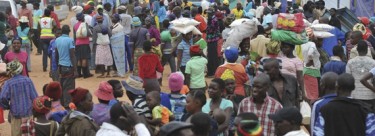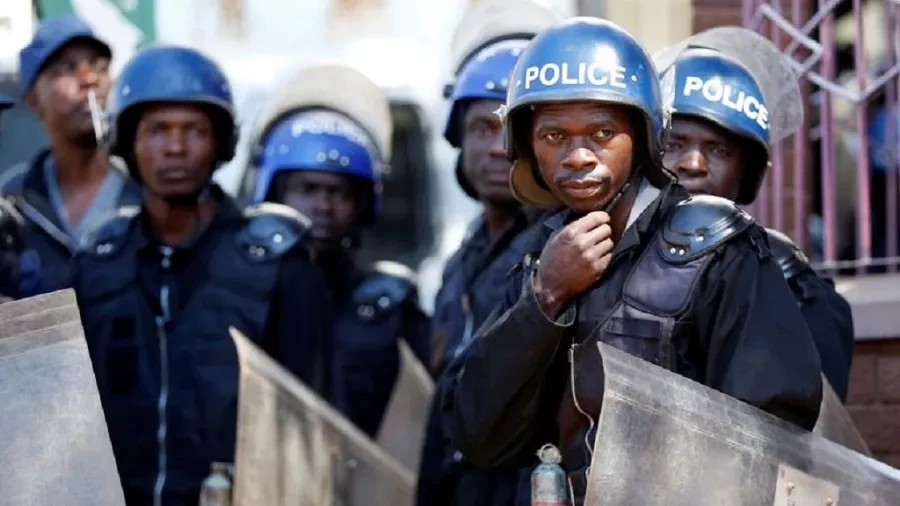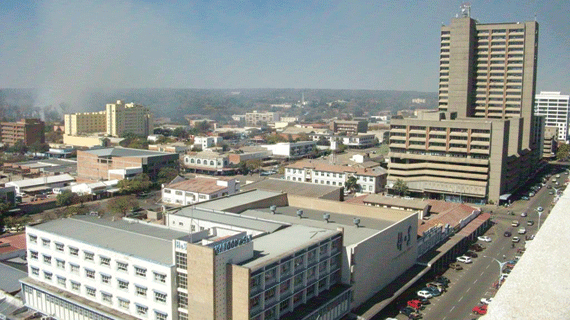
TSHOLOTSHO flood victims at Gariya village are still living in tents with no proper structures eight months after their homesteads were destroyed due to lack of funds to rebuild their homes. LUYANDUHLOBO MAKWATI OWN CORRESPONDENT
The villagers told Southern Eye that their living conditions were unbearable as the government had not fulfilled its promises of helping the affected communities with building materials and allocating them land on higher ground to erect new structures.
The government and donor agencies early this year provided food, clothing and small tents, which only house three to five people, but were accused of neglecting other equally affected villages.
Narrating her ordeal to Southern Eye in Gariya during a visit to the area last weekend, Sizwile Ncube said they were still living in shacks and their children were forced to sleep outside.
“As you can see, our living conditions are unbearable,” she said.
“We are still living in the open. When the government officials came here, they promised to give us building material so that we could build brick and mortar structures. They have now forgotten about us because they don’t care about us.”
They decried the situation as a community saying government officials had promised them land away from the flood basin so they could build new homesteads, but they never heard from them again.
Sarah Sibanda appealed to the government to act fast in attending to their pleas since the rainy season was around the corner.
- Chamisa under fire over US$120K donation
- Mavhunga puts DeMbare into Chibuku quarterfinals
- Pension funds bet on Cabora Bassa oilfields
- Councils defy govt fire tender directive
Keep Reading
“I am the only one in my homestead as all of my children are in South Africa where they are working,” she said.
“The ministers, who came here promised that they would help us get land away from this basin.
“Now we are living in fear as it’s only six weeks to the next rainy season and we still don’t have proper structures.” Sibanda attacked the government for only seeking to develop urban centres while neglecting rural areas that contribute a lot to the economy through agriculture.
“Our leaders only care about developing Harare where they stay, but they come here to siphon timber which only benefits them. We cannot do anything as far as amassing wealth and resources like them,” a visibly irritated Sibanda said.
Soon after the floods, Matabeleland North Provincial Affairs minister Cain Mathema revealed that he had engaged a local construction company to build durable houses for Tsholotsho villagers to reduce damages caused by floods.
He said Tsholotsho was generally a low-lying area and therefore vulnerable to floods, but the villagers were not keen on moving from flood-affected areas arguing that it was taboo to leave the graves of their ancestors.
“The villagers prefer not to be moved from their traditional areas because their ancestors are there. Rains have destroyed houses and even prevented children from going to school.
“They (villagers) have to be assisted with building materials. We cannot continue with the traditional housing structure, but should build stronger houses. I have been talking to Hawkflight to assist villagers build stronger houses with bricks on a mortgage facility,” Mathema was quoted as saying back then.
The villagers, however, said that was the last time they had seen or heard from Mathema. A Gariya village head, who was only identified as Nyathi, said the affected families continued to burden other families as they could no longer continue living in shacks.
“Some families have more than 20 members each and the shacks that were given only accommodate three to five people at most. So many families have resorted to asking neighbours for accommodation at night,” Nyathi said.
A report by the Tsholotsho District Civil Protection Unit noted that while all 22 wards in Tsholotsho received normal to above normal rains, wards six to eight were adversely affected by excessive rains from January 27 to February 8.
The worst hit areas included Butabubili, Gariya, Dzokotsi, Mtshina, Sandawana, Sasedza, Kalave in ward eight and Mahlaba, Mapili Mahlosi, Mbanyana, Matupula, Mbamba and Jimila in Ward Six.
Ward Eight, which is dominated by the San community, was affected by flooding caused by the spilling Gariya Dam while in Ward Six, flooding was caused by two overflowing rivers, Gwayi and Zumbani.
Last year, the government sent a high powered delegation to Tsholotsho after Southern Eye exposed the neglect of the flood victims.










